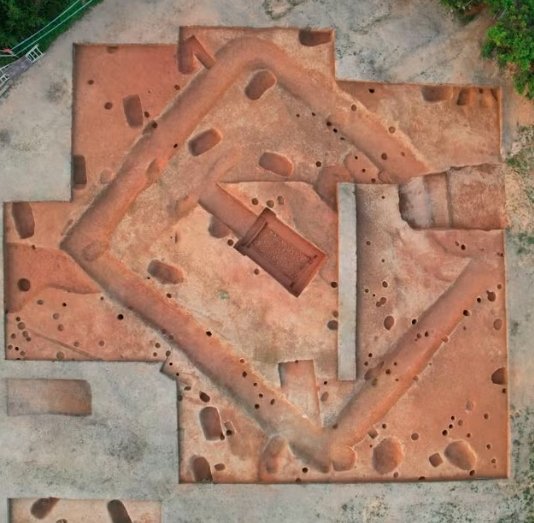In a remarkable archaeological discovery, nearly 150 ancient tombs have been unearthed within the grounds of the Guangzhou Zoo in Guangdong Province, China. Spanning over 2,100 years, these tombs offer a unique glimpse into the burial practices and cultural evolution of the region. The excavation, conducted by the Guangzhou Municipal Institute of Cultural Heritage and Archaeology, revealed a diverse collection of artifacts and burial sites from various historical periods, including the Han, Tang, Jin, Southern, Ming, and Qing Dynasties, as well as the early days of the People’s Republic of China.
A Treasure Trove of History
The discovery of these tombs has provided archaeologists with an invaluable opportunity to study the evolution of burial practices in Guangdong. The tombs, which date back to the Han Dynasty (206 BCE – 220 CE), include a variety of burial styles and artifacts. Among the most significant finds are two well-preserved tombs from the Eastern Jin and Southern Dynasties. These tombs, despite showing signs of looting, remain largely intact and offer insights into the construction techniques and funeral customs of the time.
The excavation site, covering an area of approximately 13,993 square feet, has yielded nearly 200 artifacts, including pottery, porcelain, bronze items, jade, and beaded ornaments. These items provide a rare glimpse into the daily lives and cultural practices of the people who lived in the region over two millennia ago. The arrangement of the tombs, particularly those from the Ming and Qing Dynasties, suggests a well-organized cemetery system, reflecting the advanced urban planning and societal organization of the time.

Archaeologists are particularly excited about the potential for further discoveries at the site. The Guangzhou Zoo, which has been the site of numerous archaeological finds since its construction began in 1956, continues to be a rich source of historical artifacts. The latest discovery adds to the nearly 500 ancient tombs previously unearthed in the area, highlighting the historical significance of the site.
Significance of the Findings
The discovery of these tombs is of great significance to the study of Chinese history and archaeology. The variety of burial styles and artifacts found at the site provides a comprehensive overview of the cultural and historical evolution of the region. The well-preserved tombs from the Eastern Jin and Southern Dynasties are particularly noteworthy, as they offer detailed insights into the construction techniques and funeral customs of the time.
The artifacts recovered from the tombs, including delicate jade items and intricately designed pottery, are of great historical and cultural value. These items not only provide a glimpse into the daily lives of the people who lived in the region but also reflect the artistic and technological advancements of the time. The discovery of these artifacts has the potential to significantly enhance our understanding of the cultural and historical development of Guangdong.
The arrangement of the tombs, particularly those from the Ming and Qing Dynasties, suggests a well-planned cemetery system. This reflects the advanced urban planning and societal organization of the time, providing valuable insights into the social and cultural dynamics of the region. The discovery of these tombs is a testament to the rich historical and cultural heritage of Guangdong, highlighting the importance of preserving and studying these ancient sites.
Future Prospects and Research
The discovery of these tombs has opened up new avenues for research and exploration in the field of archaeology. The Guangzhou Municipal Institute of Cultural Heritage and Archaeology plans to continue its excavation efforts at the site, with the hope of uncovering more artifacts and burial sites. The institute is also working on preserving and documenting the findings, ensuring that they are available for future generations to study and appreciate.
The artifacts recovered from the tombs will be carefully analyzed and studied, with the aim of gaining a deeper understanding of the cultural and historical context of the region. The institute plans to collaborate with other research institutions and experts in the field to conduct a comprehensive study of the findings. This collaborative effort will help to shed light on the cultural and historical evolution of Guangdong, providing valuable insights into the region’s rich heritage.
The discovery of these tombs has also highlighted the importance of preserving and protecting archaeological sites. The Guangzhou Municipal Institute of Cultural Heritage and Archaeology is committed to ensuring that the site is preserved for future generations. The institute plans to implement measures to protect the site from further looting and damage, ensuring that the historical and cultural heritage of the region is preserved for future generations to study and appreciate.













